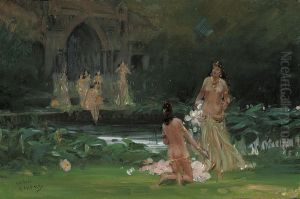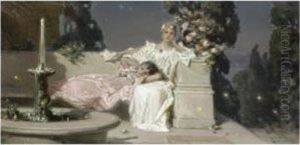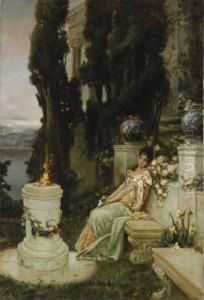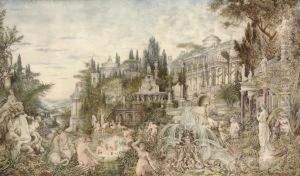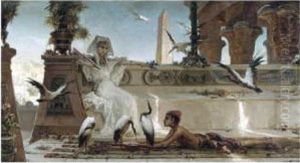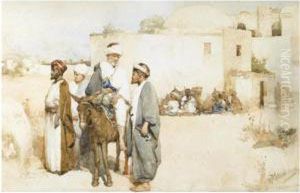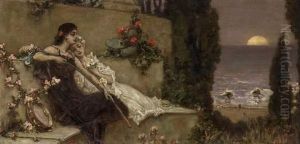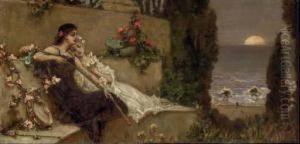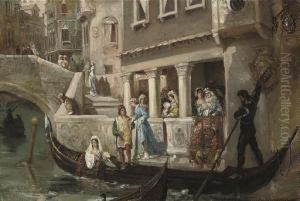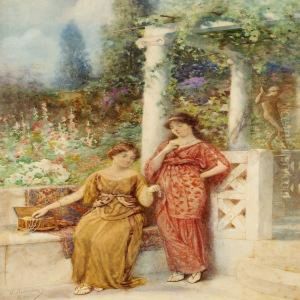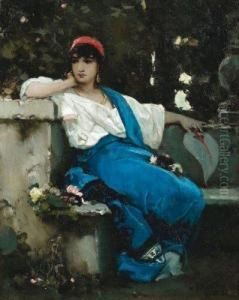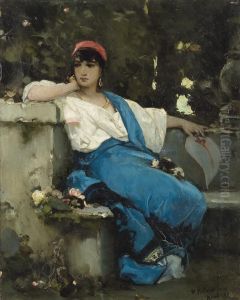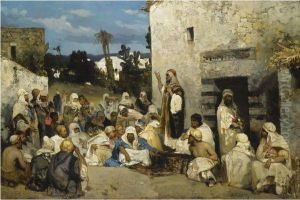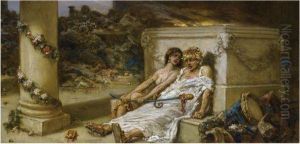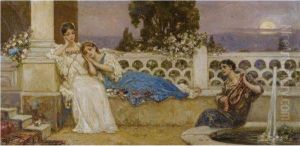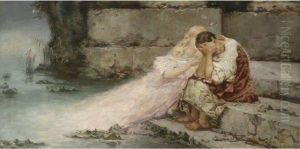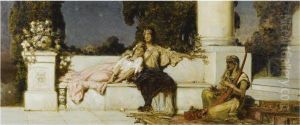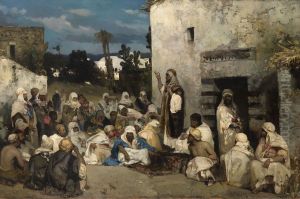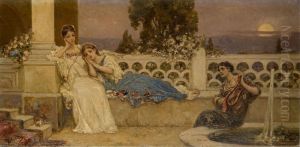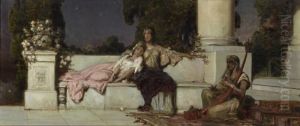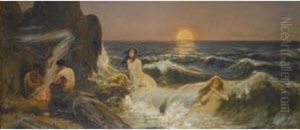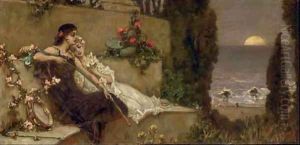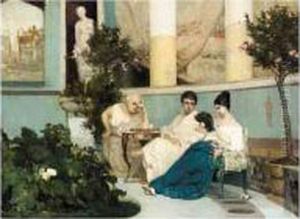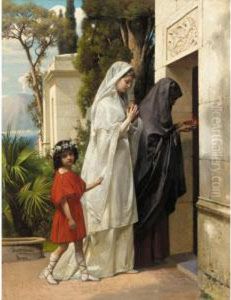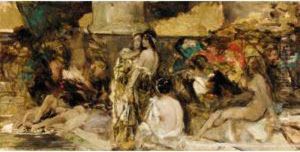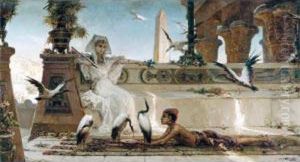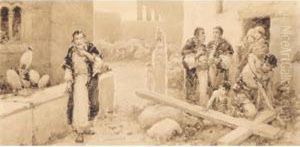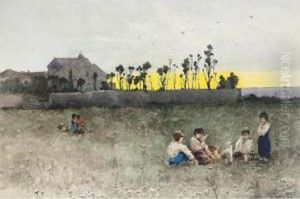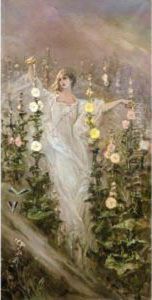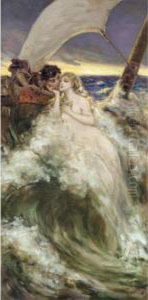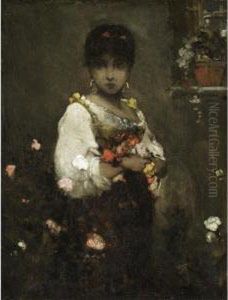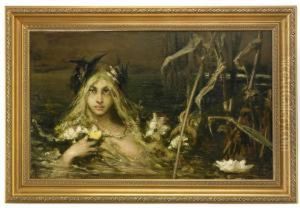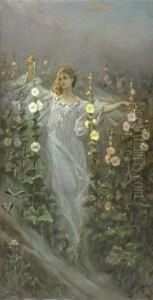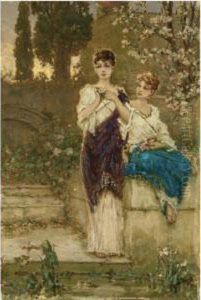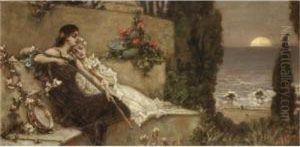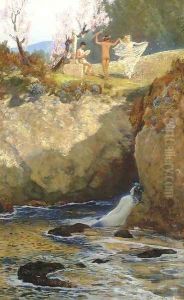Vasili Aleksandrovich Kotarbinskii Paintings
Vasili Aleksandrovich Kotarbinskii, also known as Vasily Alexandrovich Kotarbinsky, was a Russian-Polish painter who is often associated with the Symbolist movement. Born on December 12, 1849, in the village of Pochapintsy in the Podolia Governorate of the Russian Empire (now Ukraine), Kotarbinskii showed an early interest in art and eventually pursued his passion by studying at the Warsaw Drawing School and later at the St. Petersburg Imperial Academy of Arts.
During his time at the Academy, Kotarbinskii honed his skills and was influenced by classical and academic traditions. However, his style evolved to incorporate elements of Symbolism and Orientalism, which became characteristic of his work. He was particularly known for his portrayal of mythological and historical subjects, often imbued with a dream-like quality and rich in detail.
After graduating from the Academy, Kotarbinskii traveled extensively, which further influenced his artistic style. He visited countries such as Italy and Egypt, and the cultural experiences from these trips were reflected in his paintings. His works often featured exotic and romanticized scenes, including depictions of ancient Egyptian life and classical antiquity.
In the late 19th and early 20th centuries, Kotarbinskii's work gained recognition, and he participated in numerous exhibitions. He became a member of various artistic societies, and his paintings were acquired by collectors and patrons, which helped establish his reputation.
Despite his success, Kotarbinskii's life was not without challenges. The political and social upheavals of the early 20th century, including World War I and the Russian Revolution, had an impact on the artist and his work. Following the Bolshevik Revolution, he faced difficulties due to the changing political climate and the nationalization of private property, including art collections.
Vasili Aleksandrovich Kotarbinskii passed away on November 4, 1921, in Petrograd (now St. Petersburg), leaving behind a body of work that continues to be appreciated for its beauty, craftsmanship, and unique blend of influences. His paintings remain a testament to the cultural and artistic exchanges of his time, bridging the gap between Eastern and Western art traditions.
